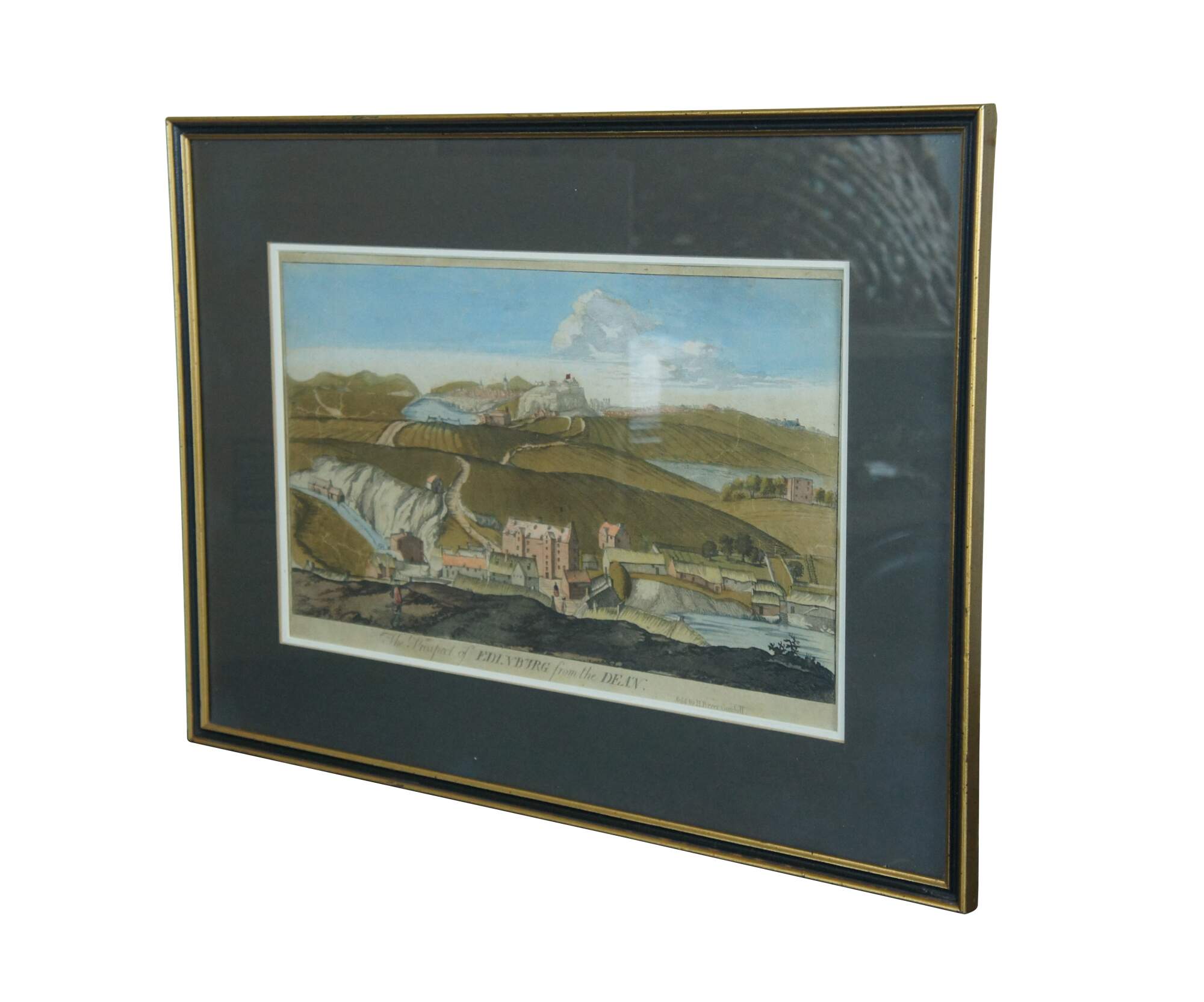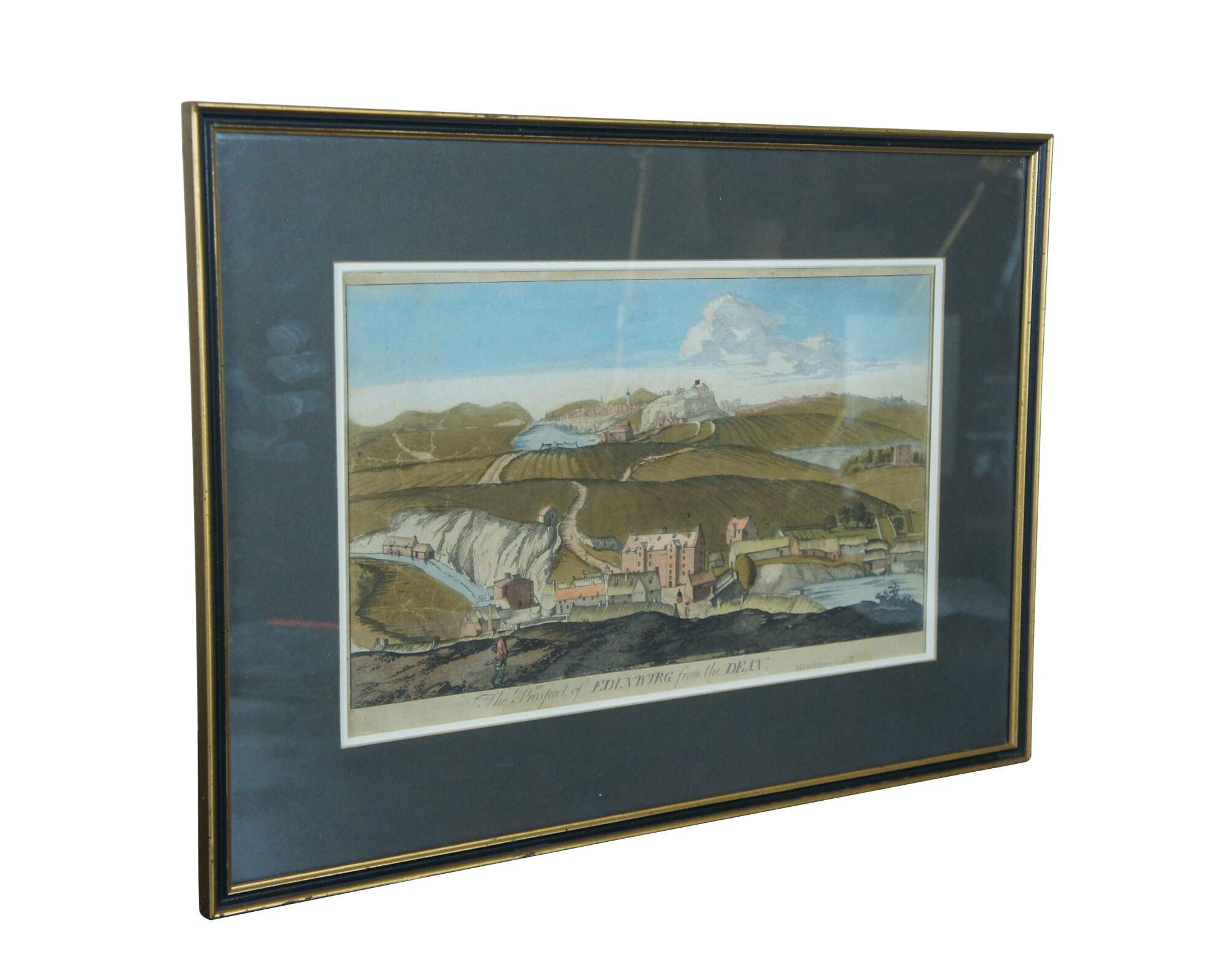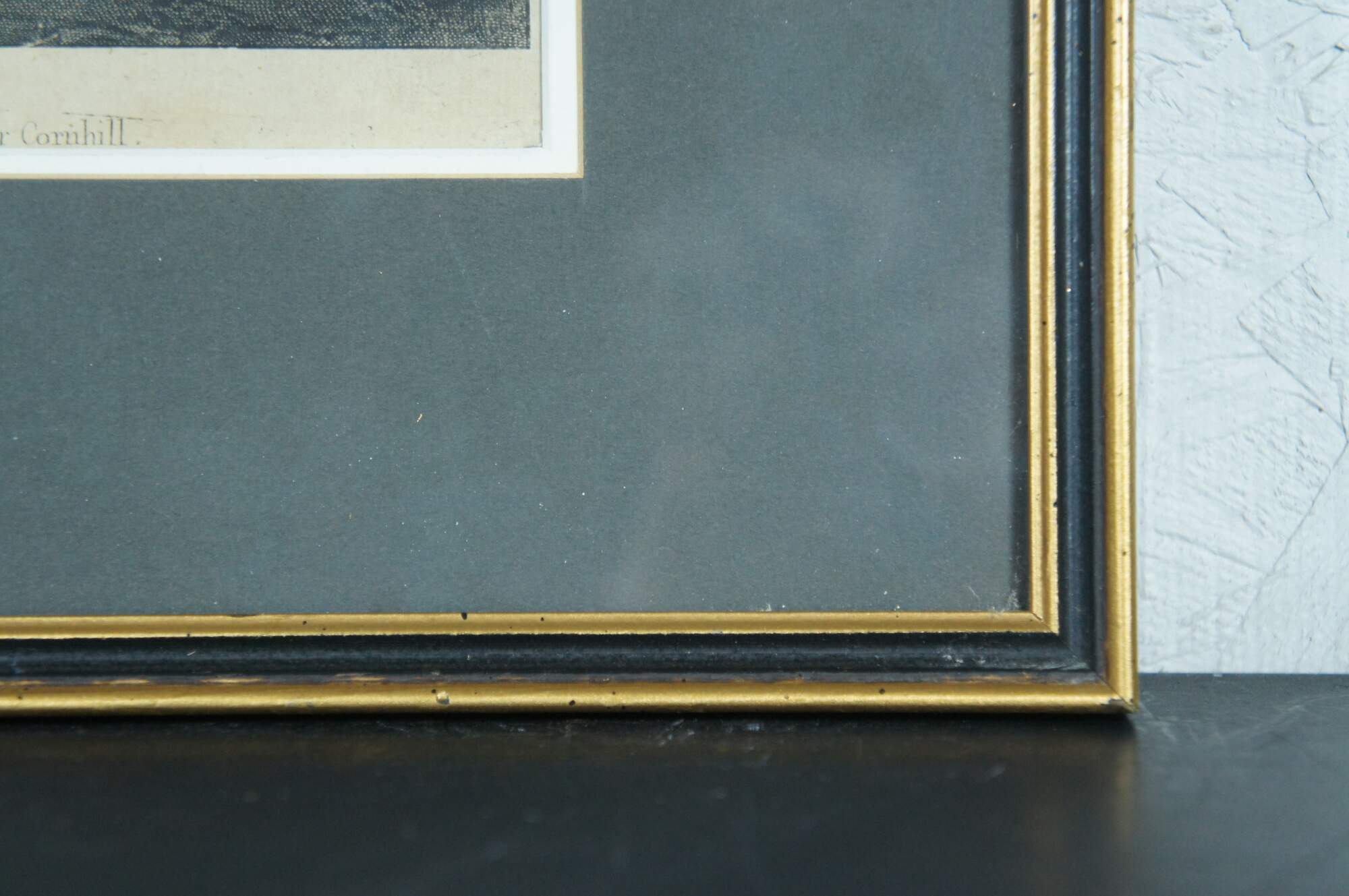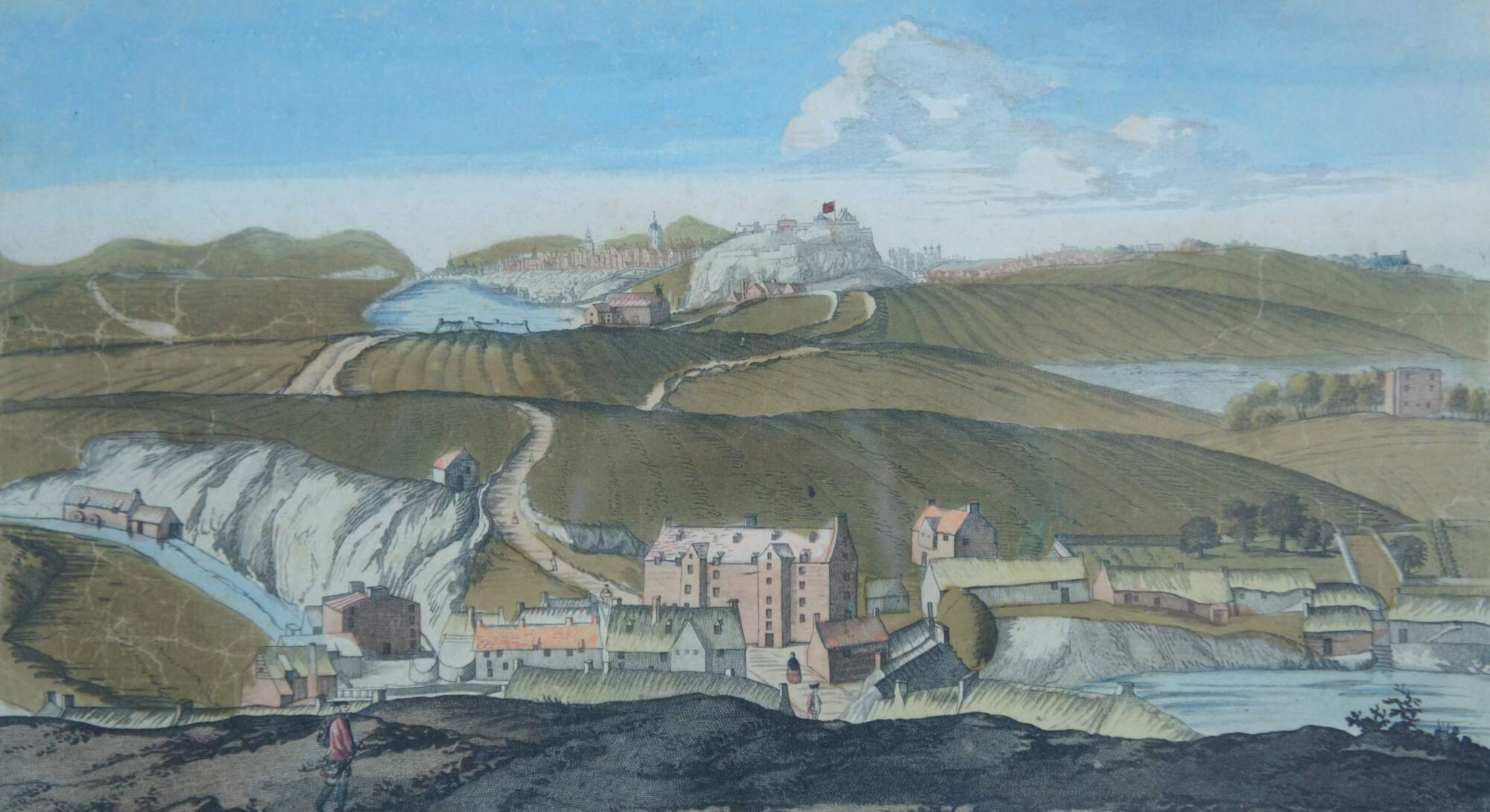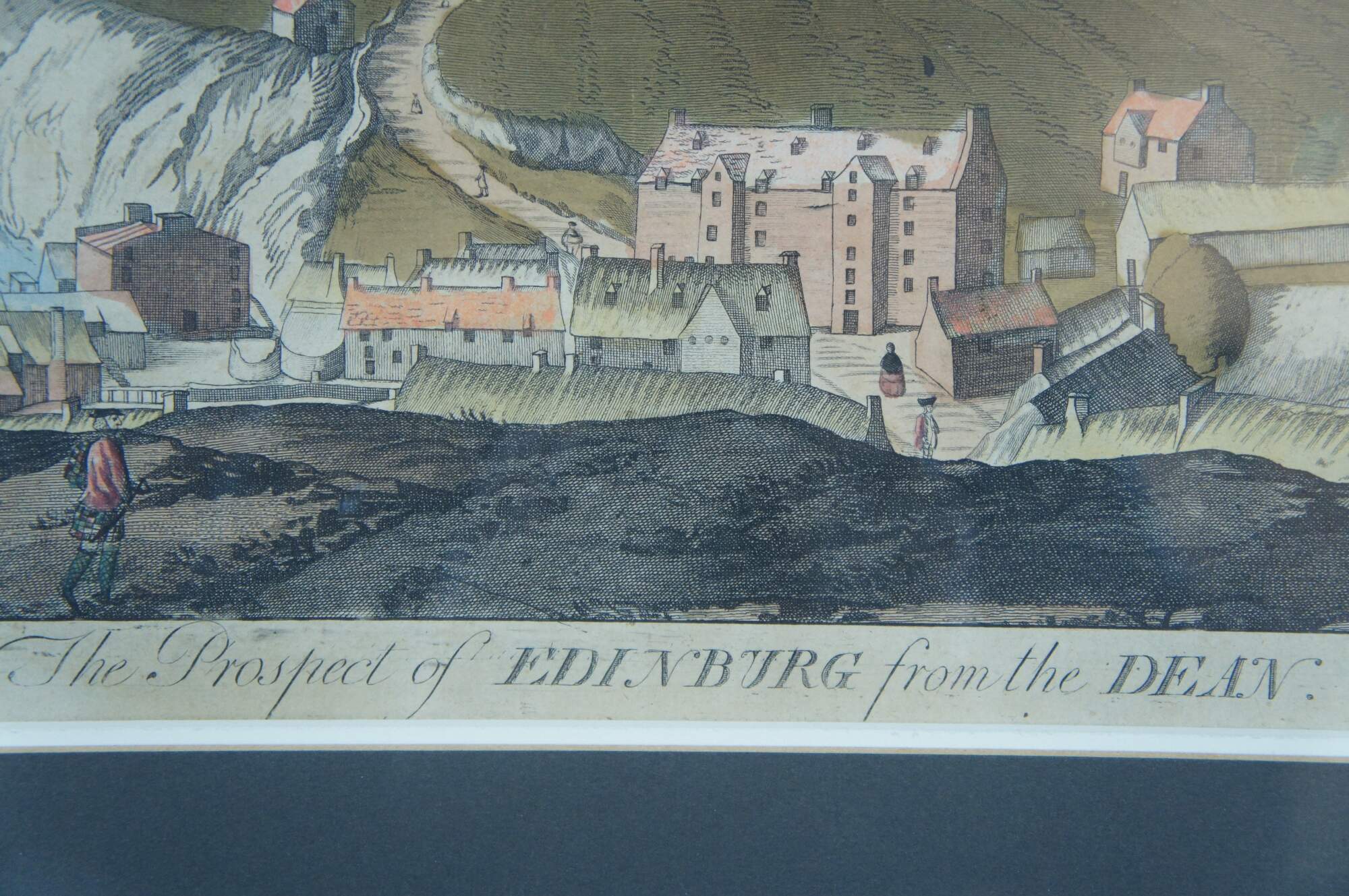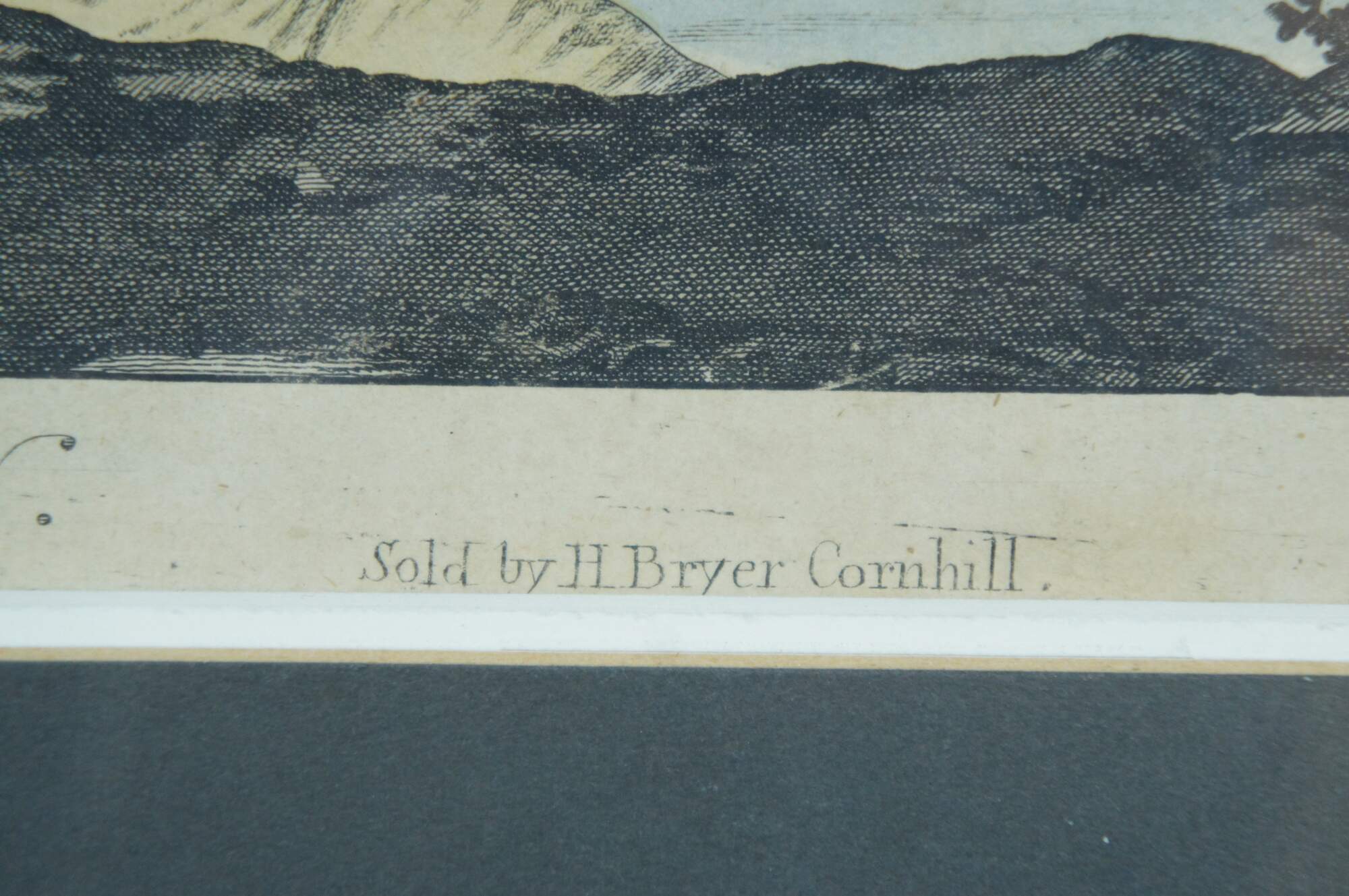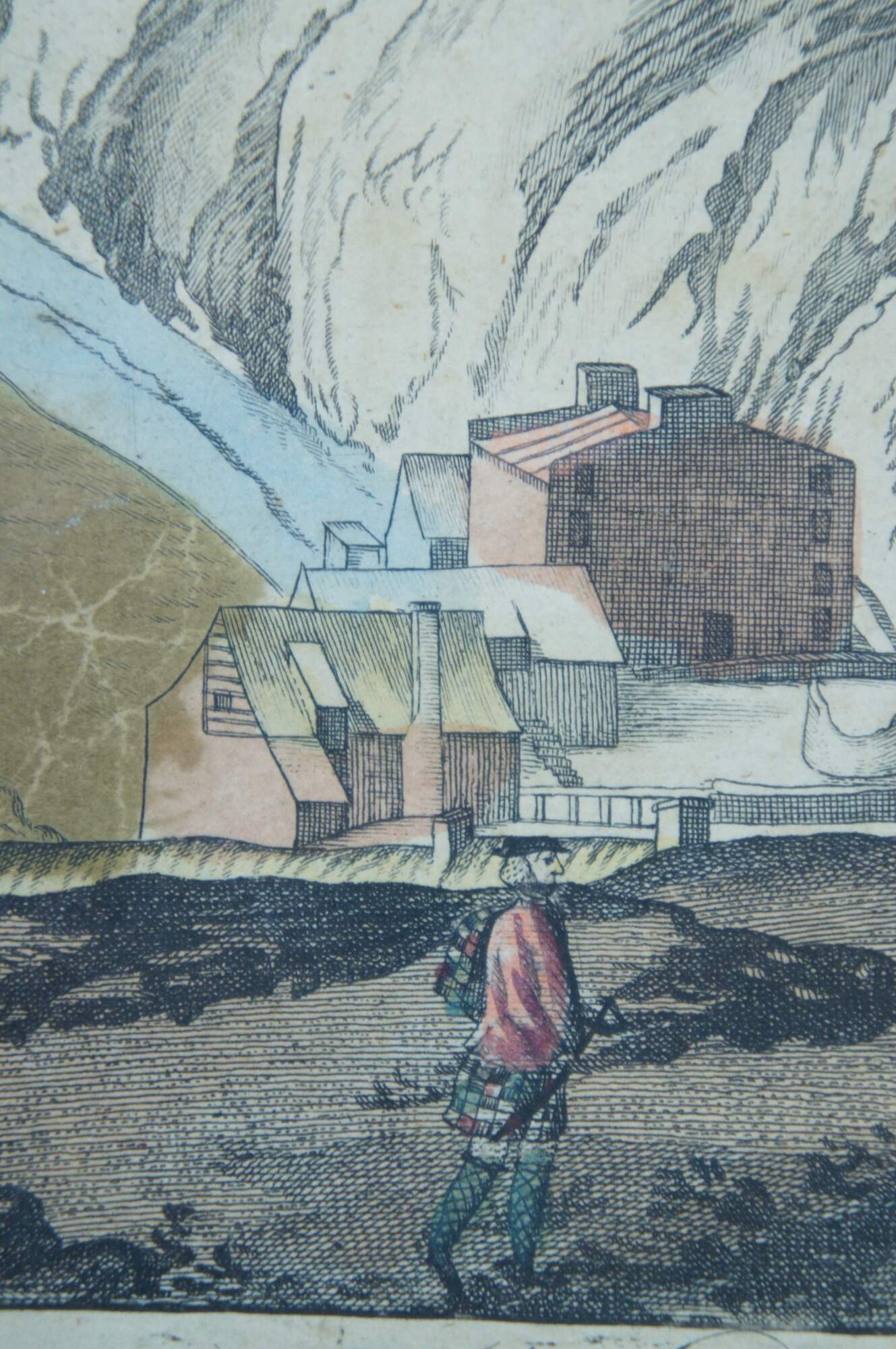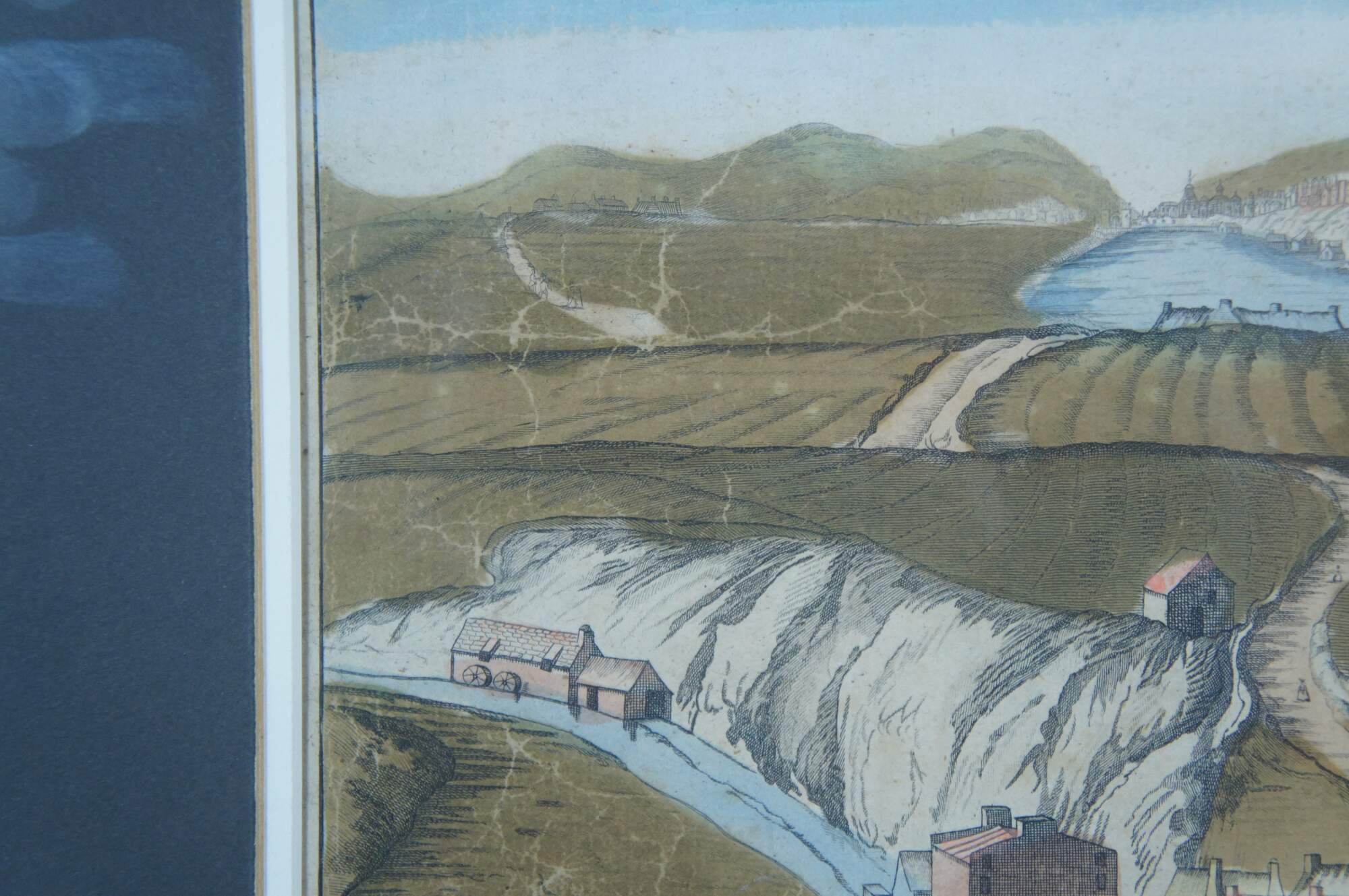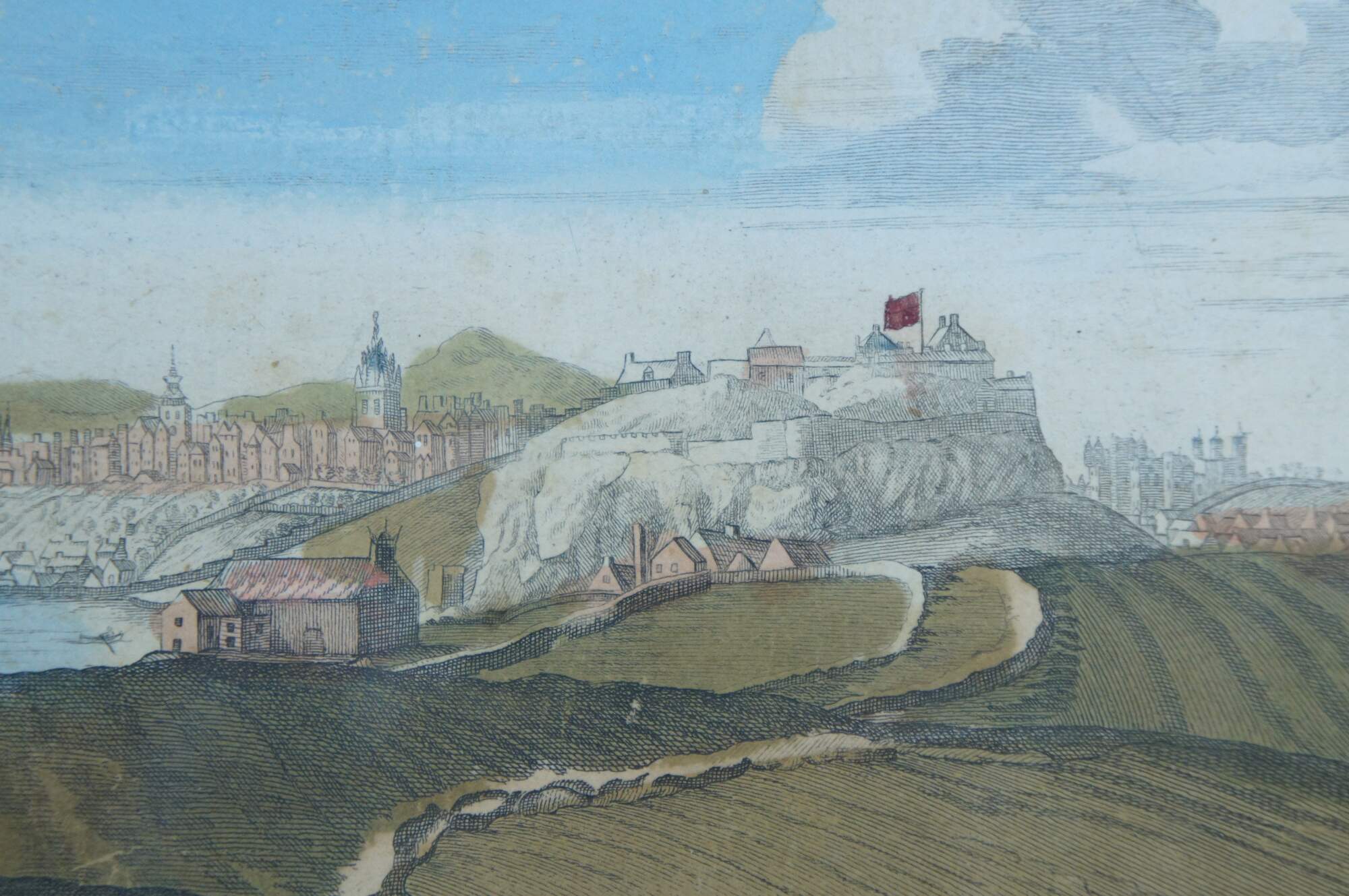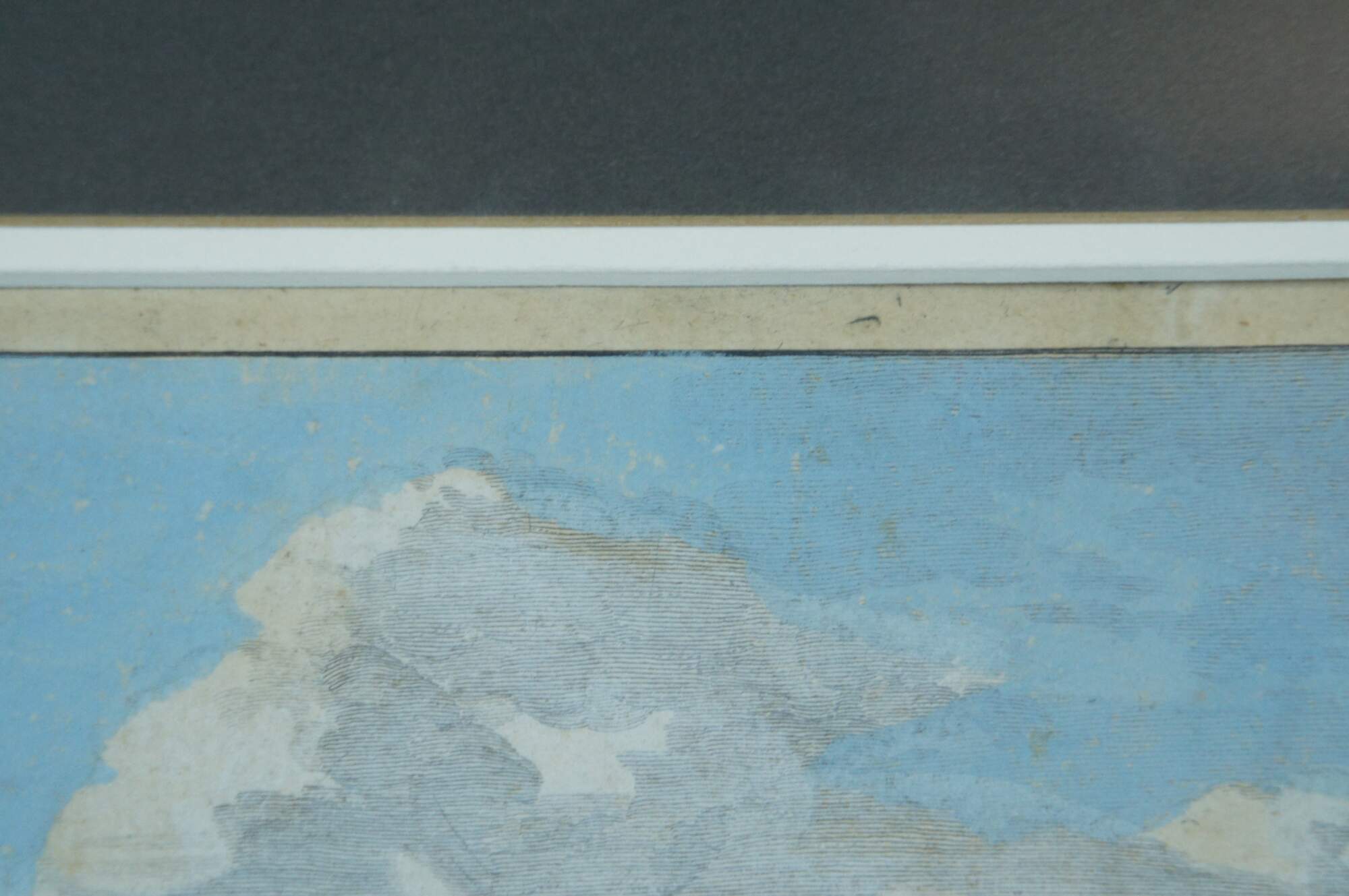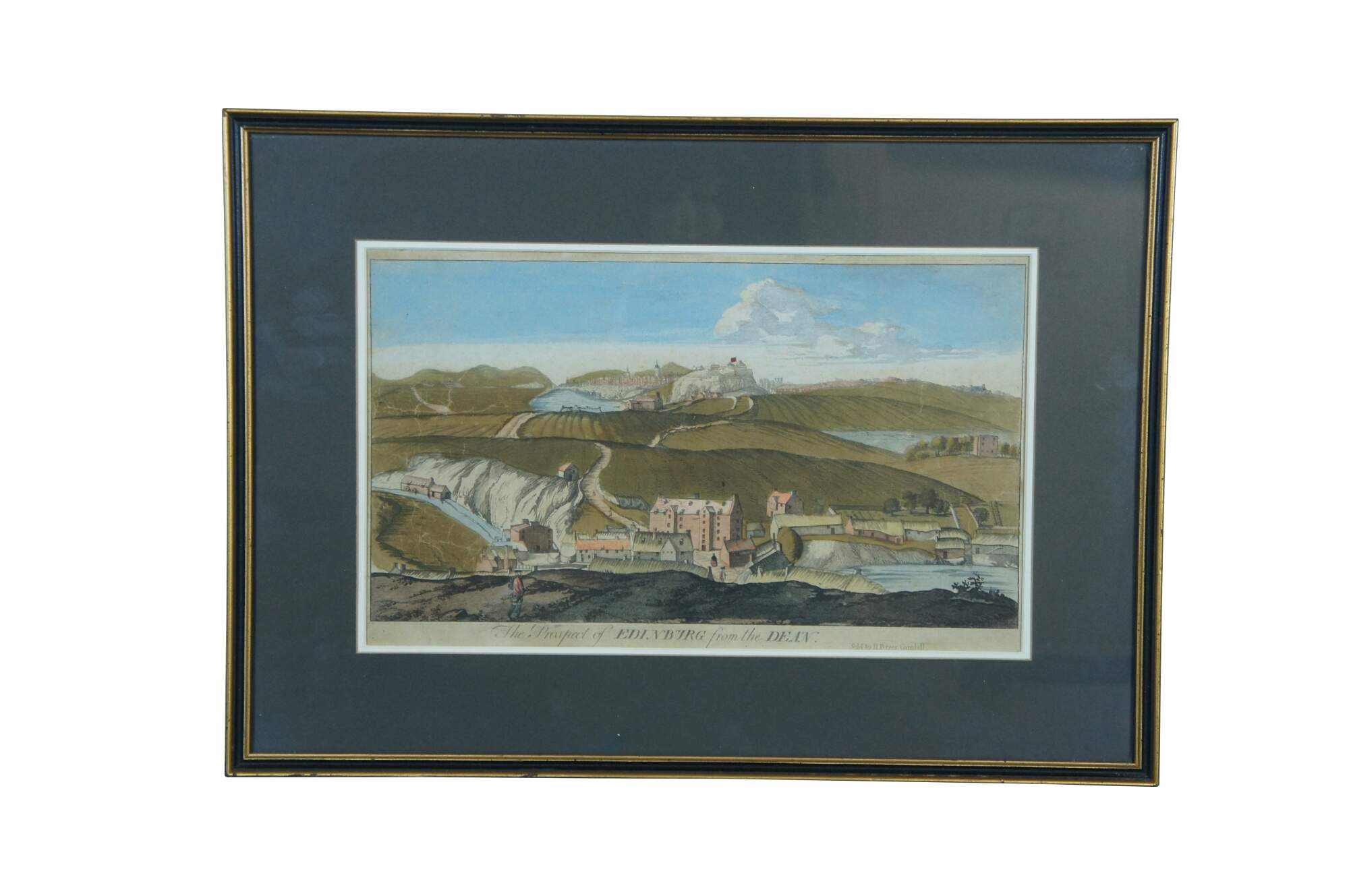
Antique 1693 John Slezer Prospect of Edinburg Dean Landscape Engraving
$280.00
Shipping:
Free Shipping Included
Delivery:
Estimated 2-15 Business Days
Payments:
Credit Card, Check, Cash, PayPal, Apple Pay, Venmo
Returns:
30 Days 100% Money Back Guarantee, Buyer Pays Return Shipping
Description
Antique German 17th century hand colored engraving titled "The Prospect of Edinburg from the Dean," by John Slezer, sold by H. Bryer, Cornhill. Giltwood frame with black painted bevel; gray mat. Shows "(t)he opposite view from ‘The Southside of the Castle of Edinburgh', seen from the Village of Dean, which is now part of Edinburgh. Left of the castle is a row of steeples - St Giles' Cathedral, the Tron Church, the Netherbow Port, the Tolbooth, and the Chapel Royal of the Palace of Holyroodhouse. Below the city is North (or 'Nor') Loch, with St Cuthbert's Church to the right. Edinburgh's extinct volcano, Arthur's Seat, is faintly visible behind the city spires, whilst to the left is Calton Hill. Heriot's Hospital is to the right of the castle mound. Image from Theatrum Scotiae by John Slezer, 1693." (Source: National Library of Scotland)
"John Abraham Slezer (before 1650 – 1717) was a Dutch-born military engineer and artist. He was born in Holland and began a military career in service to the House of Orange. He arrived in the Kingdom of Scotland in 1669, and was appointed Surveyor of his Majesties Stores and Magazines, which involved compiling detailed surveys of the country's fortifications. He is best known for his Theatrum Scotiae, a series of engravings of views of castles, abbeys, towns, and seats of the nobility he encountered whilst travelling throughout Scotland in his capacity as Captain of the Artillery Company. He was raised to the rank of Captain in 1688 and imprisoned later that year as a supporter of King James VII, following the latter's deposition in favour of William III and Mary II, but was released the following year. He published the first volume of Theatrum Scotiae in 1693, but sales were poor and he applied to the Government for a grant to proceed with a continuation of the work that was to be called Scotia Ilustrata. This never materialised, however, and increasing financial difficulties forced Slezer to spend the last years of his life in the Holyrood Abbey sanctuary to avoid debtors' prison. He died on 24 June 1714." (Source: Wikipedia)
Condition
Good Overall - Discoloration to paper
Dimensions
23.25" x 0.5" x 16.75" / Sans Frame - 16.5" x 10" (WIdth x Depth x Height)
